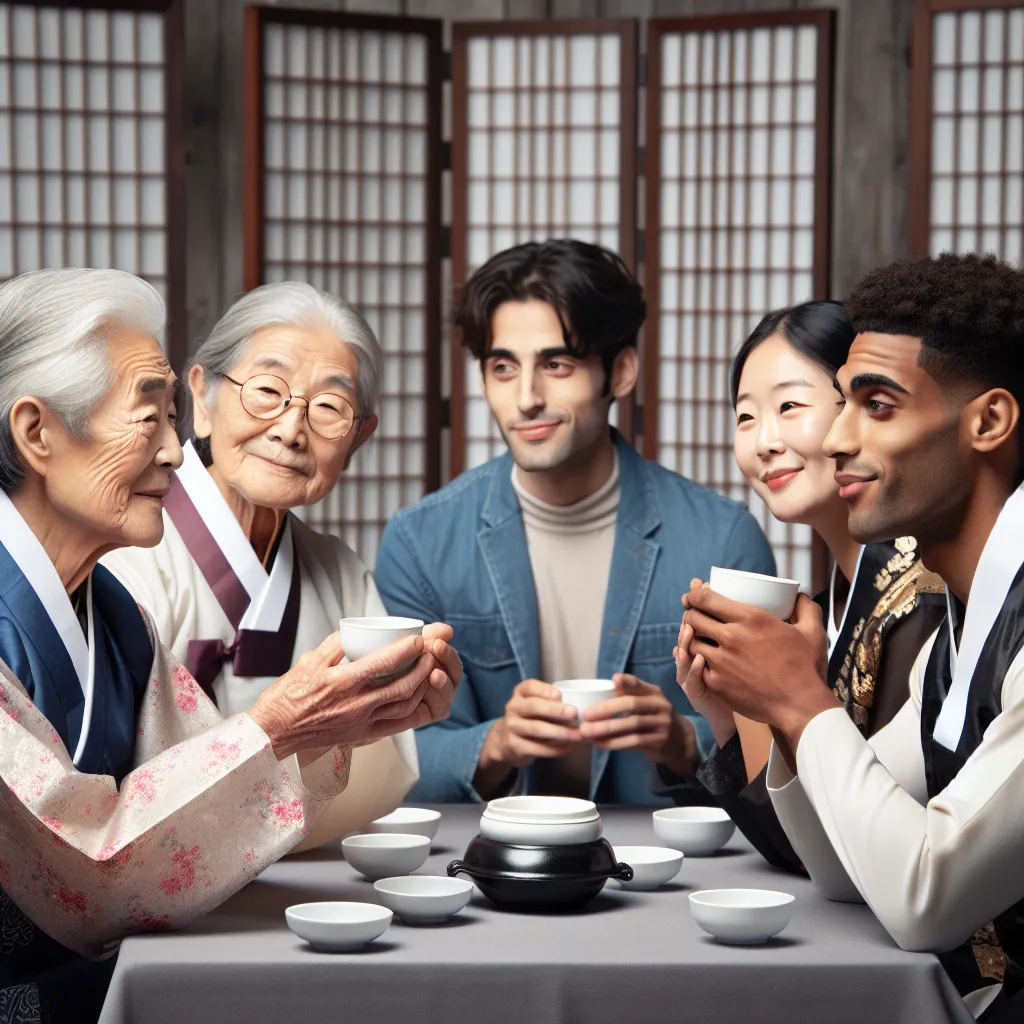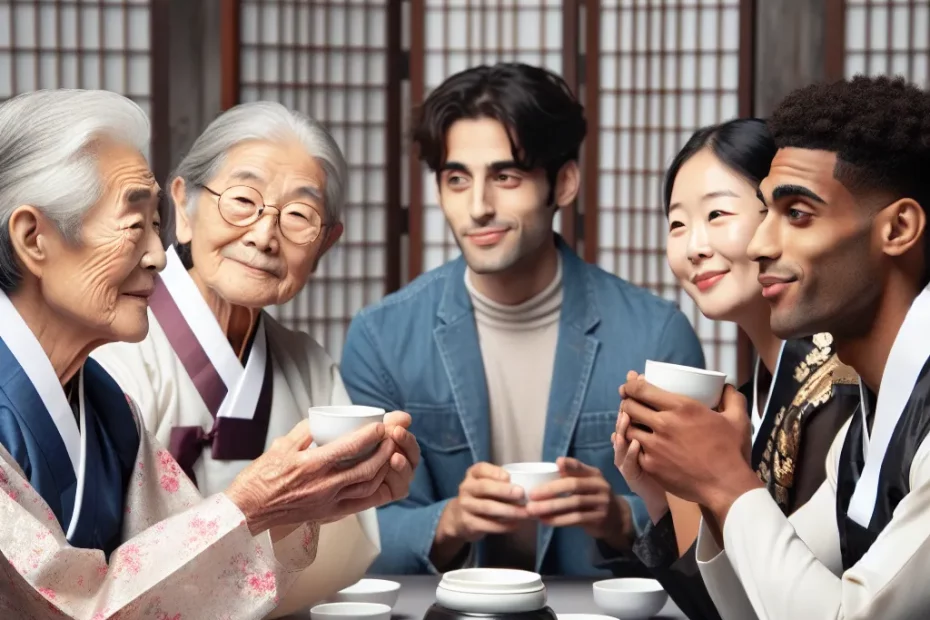The Korean honorifics system is a crucial aspect of Korean language and culture, reflecting societal values and relationships. Understanding its intricacies is essential for effective communication in various situations. From its historical roots to modern trends, the evolution of honorifics showcases the dynamic nature of Korean society. By exploring the usage of honorifics in different contexts, we gain insight into the nuances of Korean language and etiquette. As we delve into this fascinating system, we uncover a rich tapestry of linguistic traditions that shape interactions and convey respect in Korean society.

Introduction to Korean Honorifics System
In the realm of Korean language and culture, the Honorifics System stands as a pillar of respect and social hierarchy. Rooted deeply in Confucian values and traditional norms, this system governs the way individuals address and interact with one another based on factors such as age, social status, and familiarity. 🌟
The Core Concept: Jondaetmal and Banmal
At the core of the Korean Honorifics System lies the concept of “Jondaetmal” (존댓말) and “Banmal” (반말). Jondaetmal, the formal speech level, is used to show respect towards those who are older or hold higher positions, while Banmal, the informal speech level, is employed in casual settings among friends or those of equal status. This distinction in speech levels reflects the intricate social dynamics present in Korean society. 🎓
Linguistic Nuances
Furthermore, the Honorifics System extends beyond mere language etiquette and delves into various linguistic elements such as verb endings, pronouns, and even vocabulary choices. For instance, different verb endings are used to convey different levels of respect, with the speaker adjusting their speech to align with the social standing of the listener. This attention to detail showcases the nuanced nature of the Korean language. 📚
Non-Verbal Communication
In addition to verbal communication, non-verbal cues also play a significant role in the application of honorifics. Bowing, using formal titles, and maintaining appropriate body language are all integral parts of demonstrating respect in Korean culture. These gestures serve as visual representations of the deep-rooted traditions that underpin the Honorifics System. 🙇♂️
As we navigate the intricacies of the Korean Honorifics System, it becomes evident that language is not simply a means of communication but a reflection of societal values and norms. By understanding and embracing this system, we not only show respect for the traditions of the past but also pave the way for harmonious interactions in the present and future. Let us delve deeper into the rich tapestry of Korean honorifics and unravel the threads that bind language, culture, and respect. 🌺
History and Evolution of Korean Honorifics
The Korean honorifics system, deeply rooted in the country’s culture and language, has a rich history that dates back centuries. It is a linguistic feature that reflects the hierarchical nature of Korean society, emphasizing respect, politeness, and social status in communication. 🌟
The Role of Honorifics in Traditional Korean Society
In traditional Korean society, the use of honorifics was crucial in maintaining harmony and showing proper etiquette. Different forms of honorifics were used based on the age, social status, and relationship between the speakers. This intricate system played a significant role in shaping Korean language and communication styles. 📜
Historical Development of Korean Honorifics
One of the earliest forms of honorifics in Korean can be traced back to the Three Kingdoms period (57 BC – 668 AD), where the language already exhibited elements of deference and respect. As Korean society evolved over the centuries, so did the honorifics system, becoming more complex and nuanced. 🏛️
Standardization of Honorifics in the Joseon Dynasty
During the Joseon Dynasty (1392-1910), the use of honorifics became more standardized and structured. The social hierarchy of the time heavily influenced the language, leading to the development of various speech levels and honorific suffixes to address individuals of different ranks. This period marked a significant milestone in the evolution of Korean honorifics. 🏯
Modern Usage of Honorifics in Korean
In modern Korean, honorifics continue to play a vital role in everyday communication, although the system has undergone some simplification compared to historical forms. Today, honorifics are used to show respect not only based on age and social status but also in professional settings and formal occasions. The Korean language has specific verb endings, vocabulary, and grammatical structures dedicated to honorific speech. 💬
Cultural Significance of Korean Honorifics
The evolution of Korean honorifics reflects the cultural values of respect, humility, and harmony that are deeply ingrained in Korean society. Understanding the history and development of the honorifics system is essential for anyone looking to communicate effectively in Korean and navigate the intricacies of Korean language and culture. 🌺
In conclusion, the history and evolution of Korean honorifics showcase the profound impact of societal norms and values on language use. The intricate system of honorifics in Korean serves as a testament to the importance of respect and hierarchy in Korean culture, shaping the way people interact and communicate in various social contexts. 🌟
Usage of Korean Honorifics in Different Situations
In Korean culture, the use of honorifics plays a crucial role in communication, reflecting the hierarchical nature of society. The honorifics system in Korean language involves various levels of formality and respect, depending on the relationship between the speakers. Let’s delve into the usage of Korean honorifics in different situations to understand how this linguistic feature shapes interactions.
Formal Settings
In formal settings, such as business meetings or official events, it is customary to use the highest level of honorifics to show respect to superiors or elders. Addressing someone with the appropriate honorific title, such as “님 (nim)” after their name, signifies deference and politeness. This level of formality is essential to maintain professionalism and uphold traditional values in Korean society.
Casual Settings
On the other hand, in casual settings among friends or peers, the use of honorifics may be more relaxed. Younger individuals may address older friends with honorifics to show respect, but the tone can be more informal and friendly. This balance between respect and familiarity is a key aspect of Korean communication dynamics.
Family Interactions
Within families, the use of honorifics also plays a significant role, especially in addressing older relatives. Children are taught to use honorific titles when speaking to their grandparents or older siblings, reinforcing the importance of respect for elders from a young age. This cultural emphasis on hierarchy and respect is deeply ingrained in Korean society.
Customer Service Interactions
In customer service interactions, such as in restaurants or stores, employees often use honorific language to show courtesy and professionalism to customers. Addressing customers with polite speech forms and honorific titles creates a welcoming atmosphere and enhances the overall customer experience. This level of attention to detail in language reflects the importance of customer service in Korean culture.
In conclusion, the usage of Korean honorifics varies across different situations, reflecting the complex social dynamics and cultural values of Korean society. Whether in formal settings, casual conversations, family interactions, or customer service encounters, the appropriate use of honorifics is essential in conveying respect, politeness, and maintaining harmonious relationships. Understanding and mastering the nuances of Korean honorifics is key to effective communication in Korean culture. 🇰🇷✨
Modern Trends in Korean Honorifics
In the dynamic landscape of Korean language and culture, the use of honorifics plays a crucial role in communication. The Korean honorifics system, deeply rooted in Confucian values of respect and hierarchy, has been evolving over the years to reflect the changing societal norms and values. Let’s delve into some of the modern trends shaping the use of honorifics in contemporary Korean society!
Increased Use of Gender-Neutral Terms
One notable trend in Korean honorifics is the shift towards gender-neutral language. With a growing awareness of gender inclusivity, there has been a rise in the use of neutral terms that do not specify the gender of the individual being addressed. This trend reflects a broader societal movement towards gender equality and respect for diverse identities.
Rise of Informal Speech
While traditional Korean culture emphasizes formal language and hierarchical relationships, there has been a noticeable increase in the use of informal speech among younger generations. This trend reflects a more casual and egalitarian approach to communication, where individuals are more likely to address each other on a first-name basis rather than using formal titles.
Impact of Digital Communication
In the age of digital communication, the use of honorifics has adapted to online platforms and social media. With the rise of emojis, abbreviations, and informal language in online interactions, the boundaries between formal and informal speech have become more fluid. This trend highlights the influence of technology on language use and the blurring of traditional linguistic norms.
Incorporation of Foreign Terms
As Korean society becomes more globalized, there has been an increase in the incorporation of foreign honorific terms from languages such as English and Japanese. This trend reflects the influence of international culture and the blending of different linguistic traditions in modern Korean communication.
Celebration of Diversity
Another significant trend in Korean honorifics is the celebration of diversity and inclusivity. With a growing recognition of different cultural backgrounds and identities, there is a greater emphasis on using honorifics that respect and acknowledge individual differences. This trend reflects a broader shift towards cultural openness and acceptance in Korean society.
In conclusion, the modern trends in Korean honorifics reflect a dynamic and evolving linguistic landscape that is shaped by changing social values, technological advancements, and cultural influences. By embracing gender-neutral language, informal speech, digital communication, foreign terms, and diversity, Korean honorifics continue to adapt to the complexities of contemporary society. As language evolves, so too does the way we express respect and communicate with one another in the rich tapestry of Korean culture.
The Korean honorifics system is deeply rooted in the culture and history of Korea, evolving over centuries to reflect societal values and norms. Understanding the nuances of honorifics is crucial in navigating various social interactions in Korean society. From addressing elders to speaking to strangers, the proper use of honorifics demonstrates respect and consideration for others. As Korean society continues to modernize, the use of honorifics may also evolve to reflect contemporary values and trends. Embracing and mastering the Korean honorifics system not only showcases cultural awareness but also fosters meaningful connections with others. In a globalized world where cultural understanding is increasingly important, the significance of Korean honorifics should not be underestimated. Mastering this aspect of Korean language and culture can open doors to deeper relationships and greater opportunities.
